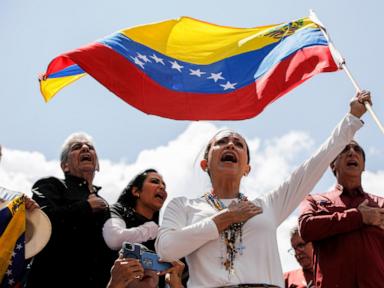ARTICLE AD BOX
THE world’s largest emerald has a rather bizarre story, marked by a contentious ownership dispute that plagued it for nearly two decades.
Found in Brazil’s Carnaíba region, the 840-pound Bahia Emerald — worth a speculated $1 billion — is entangled in a legal tug-of-war between American investors and the Brazilian government.
 LA Sheriff's Department
LA Sheriff's Department LA Sheriff's Department
LA Sheriff's Department
The saga, filled with alleged smuggling, claims of curses, and tales of financial ruin, is reaching a critical moment in the US District Court for the District of Columbia.
The Bahia Emerald’s story is laden with misfortune, to the point that many believe the massive gemstone is cursed.
Since its discovery, the stone, which is the size of a mini fridge, has narrowly escaped disaster, incited conflict, and left a trail of financial ruin.
Some see these mishaps as mere bad luck, while others view them as the workings of a sinister curse on anyone who tries to profit from it.
Discovering the emerald
In 2001, miners in Bahia, Brazil, discovered what would become one of the world’s largest emerald clusters in Carnaíba’s semiarid mountains.
Unlike the prized emeralds of Colombia, Brazilian stones are known for their cloudy appearance and lower value.
Yet, the emeralds found in Carnaíba are also far larger, with the Bahia Emerald being the most astonishing example.
The stone passed into the hands of a local merchant nicknamed “The General,” who sold it for a modest $8,000 to two gem prospectors.
They then moved it to São Paulo, where it reportedly sat in a mechanic’s cluttered garage for years, viewed by some as “literally in the way.”
Shortly after its discovery, the Bahia Emerald was almost lost in a catastrophic flood as it was transported to São Paulo.
It escaped the waters miraculously, but this was only the first in a series of events that marked the emerald as a cursed object.
When the prospectors ultimately shipped it to the United States in 2005, its journey through the American gem market was chaotic and marred by scandal.
Various speculators saw potential fortune in the massive rock, but few could find a buyer.
As amateur investors vied to secure its ownership, each would-be seller saw their financial hopes dashed as deals fell through and new claimants appeared.
In the end, the stone landed in the hands of Florida gem dealer Jerry Ferrara and his business partner, Kit Morrison, who together founded FM Holdings.
When the emerald made its way to the United States, it was caught in yet another calamity—this time in New Orleans during Hurricane Katrina, where it was stored.
Once again, the emerald narrowly avoided destruction.
These repeated brushes with disaster have only fuelled the idea of an ominous force attached to it.
A “cursed” gem
The curse appeared to manifest more intensely as disputes over the stone intensified.
In its early years in the U.S., the Bahia Emerald was stored in a Las Vegas warehouse and then moved to an unmarked facility in Los Angeles.
From here, it was reportedly stolen, reappearing in South El Monte, California, in a private warehouse under mysterious circumstances.
This marked just one of several bizarre thefts the stone would endure.
Ferrara, who later obtained rights to the stone, alleged that his business partner, Larry Biegler, even claimed that the Brazilian mafia was after him because of the emerald.
Biegler told police the rock had been stolen, prompting an investigation that eventually led to the Los Angeles Sheriff’s Department seizing it as evidence.
The journey of the Bahia Emerald
THE Bahia Emerald was discovered in Brazil’s Carnaíba region and later flown to several states in the US
1. Carnaíba, Bahia, Brazil – Discovery Site
The Bahia Emerald was mined from the Carnaíba region, known for its giant emerald deposits. This is where the journey began in the early 2000s.
2. São Paulo, Brazil – First Storage Location
After its discovery, the emerald was transported to São Paulo. It was reportedly stored in a cluttered car repair shop here for several years.
3. New Orleans, Louisiana, USA – Hurricane Katrina Incident
The Bahia Emerald was stored in New Orleans during Hurricane Katrina in 2005. The gem narrowly escaped flooding, which added to its reputation for surviving near-disasters.
4. Las Vegas, Nevada, USA – Storage Location
From New Orleans, the emerald was briefly stored in a warehouse in Las Vegas before being moved again.
5. Los Angeles, California, USA – Multiple Incidents and Disputes
The emerald’s longest stay in the U.S. was in Los Angeles, where it was involved in several thefts and legal battles:
It was reportedly stolen and rediscovered in South El Monte, a neighbourhood in Los Angeles County.
It was also seized by the Los Angeles Sheriff’s Department and has remained in California custody throughout various court battles.
6. Washington, D.C., USA – Current Legal Battle Location
The U.S. District Court for the District of Columbia is the latest and possibly final location in the emerald’s legal saga, where the decision on its return to Brazil is pending.
This round of disputes brought to light even more unusual accusations.
Rumours swirled of underground deals, shadowy connections to organised crime, and even ties to the infamous Ponzi schemer Bernie Madoff, though no clear link was ever established.
As ownership of the gem turned into a full-scale battle, Ferrara and Morrison poured vast sums of money into legal fees, holding onto hope that the emerald’s fabled worth could change their fortunes.
For many, though, the curse had already done its damage.
Brazil’s legal push
Now, years after the Brazilian government learned of the emerald’s exportation, the country has initiated legal proceedings to repatriate it, claiming it was smuggled out illegally, The Washington Post reports.
Brazilian prosecutor Boni de Moraes Soares said it belongs in a museum rather than in private hands.
He said: “We aren’t moved by any financial interest.
“We want to send a signal that we will go after Brazil’s national property where it is found and hold to account international traffickers, so they’ll think twice before committing a crime so brazen.”
The legal basis for Brazil’s claim is compelling.
 Getty
Getty Getty
GettyBrazilian courts uncovered that the emerald’s export documents falsely identified it as “bitumen and asphalt”.
They also say that the first license to mine the area from which it was sourced was not granted until years after the stone’s discovery.
Brazilian authorities prosecuted the original prospectors, convicting them of smuggling and public property usurpation.
In 2015, they sought the US government’s help under a diplomatic accord, the Mutual Legal Assistance Treaty, to retrieve the stone.
America’s side of the story
Despite the controversies surrounding the Bahia Emerald, Ferrara and Morrison have remained firm in their ownership claims.
They repeatedly asserted that they acquired the stone legally in the U.S. Ferrara’s journey with the stone has been anything but easy.
Ferrara said: “I always tell people, ‘I’m the richest poor man you’ll ever meet,’” reflecting on his years of financial struggle and pursuit of the emerald’s potential riches.
Ferrara initially received the emerald’s deed in partnership with a California plumber, Larry Biegler, in exchange for an agreement to split any profits.
But this partnership soured over time, especially after Biegler alleged that the Brazilian mafia was pursuing him and reported the emerald as stolen.
Following this, the Los Angeles Sheriff’s Department seized the stone, sparking a years-long battle in California courts.
In 2015, a judge sided with Ferrara and Morrison, establishing them as the stone’s rightful owners within the US.
 The gem is a raw and uncut mass of black schist speckled with green gems
The gem is a raw and uncut mass of black schist speckled with green gemsThe final battle
Brazil’s argument for the emerald’s return has garnered national sentiment.
A Brazilian judge once stated: “We are not a colony. We are a sovereign country.
“Our riches cannot be distributed to innumerable countries at modest prices.”
This sentiment resonates with the Brazilian public, as the country has seen its natural and cultural wealth taken abroad for centuries.
The Bahia Emerald, many Brazilians feel, represents their nation’s legacy and should remain within its borders.
Even with the US court’s recognition of Ferrara and Morrison as legitimate owners, Brazil’s diplomatic push has left them uncertain of the gem’s future.
The case is now in the hands of US Judge Reggie B. Walton, who is expected to issue a decision on the petition soon.
Morrison, resigned to what he believes will be a losing battle, recently expressed doubt that the Bahia Emerald will remain in US custody.
He said: “If it’s truly a national treasure, it belongs in Brazil. That’s where I’m at right now. I have to look at the reality.”
Despite this, Ferrara remains determined to fight, saying: “Do I want to continue to fight? Yes, absolutely. I didn’t put 16 years of my life into this for nothing.”
Throughout this intense legal drama, the Bahia Emerald has earned a reputation as a cursed gem, leaving financial ruin and legal battles in its wake.
For Ferrara, Morrison, and numerous others who’ve vied for its ownership, the stone’s supposed $1 billion value has remained tantalisingly out of reach.
Brazilian officials, echoing an Indiana Jones-esque resolve, claim the emerald belongs in a museum, not as an object of fortune.
As Judge Walton’s decision looms, the final chapter of the Bahia Emerald saga may soon be written, closing a story filled with dreams of riches, accusations of criminal smuggling, and battles for a gemstone that has eluded prosperity for all who’ve tried to claim it.
Whether it ultimately returns to Brazil or remains in the US, the Bahia Emerald has cemented its place as one of the world’s most mystifying treasures, and a reminder of how elusive fortune can be.
.png)
 4 weeks ago
2
4 weeks ago
2








 English (US)
English (US)